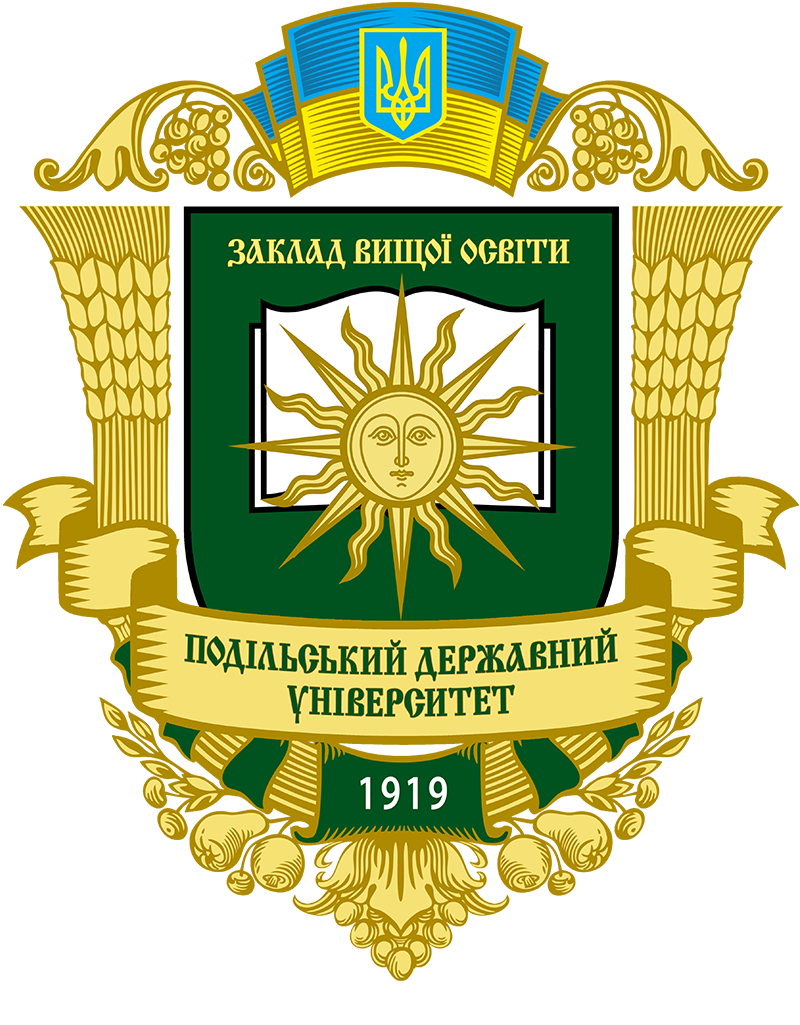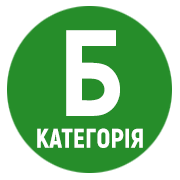FACTORS INFLUENCING THE PRODUCTION AND INTENSITY OF HEAVY METALS ACCUMULATION IN THE HOMOGENATE OF DRONE LARVAE
DOI:
https://doi.org/10.37406/2706-9052-2024-2.15Keywords:
homogenate of drone larvae, heavy metals, concentration, productionAbstract
In Ukraine and the world, in recent years there has been a growing interest in finding alternative sources of complete protein. One such source is drone larvae, which are raised by honey bees. They are not only a source of protein, but also have a high concentration of biologically active compounds, such as vitamins, minerals and other useful components. The protein apiproduct obtained from drone larvae contains a perfectly balanced amino acid and fatty acid composition. Homogenate of drone larvae is one of the little-known products of beekeeping, which is obtained from drone larvae aged from 3 to 7 days. The aim of the work was to determine the effect of the flowering period of nectarine on the production of homogenate of drone larvae and the concentration of heavy metals in it. The homogenate of drone larvae was produced in two periods during the flowering of the nectar-pollen stalks of winter rape and forage, linden and buckwheat. Larvae of drone larvae were obtained using construction frames. Larvae were selected on the 7th day of their life. In the conducted studies, the effect of the flowering of a certain species of nectarine on the production of homogenate of drone larvae and the concentration of heavy metals in it was studied. The production of homogenate of drone larvae per season per family was 0.945 kg, of which 77% occurred during the flowering period of linden and buckwheat and 23% – during the winter and spring rapeseed rape. The most homogenate was produced in families with a strength of 9.5 hives, with an advantage of 47.9% and 71.3% of bee families with a strength of 6.5 and 4.5 hives, respectively. The content of heavy metals in the homogenate did not exceed the maximum allowable concentrations. A lower content of lead, cadmium, zinc and copper was found in the homogenate produced during the flowering period of winter rapeseed and spring forage. In the homogenate of drone larvae produced during the flowering of winter rapeseed and forage, the hazard ratio was lower by 29.6% for lead, 40% for cadmium, 26.0% for zinc, and 14.2% for copper, compared to the flowering period of linden and buckwheat.
References
Гречка Г. М. Виробництво та біологічна цінність личинкового продукту бджільництва. Науковий вісник Львівського національного університету ветеринарної медицини та біотехнологій імені С. З. Ґжицького. Серія «Сільськогосподарські науки». 2010. Т. 12. № 3 (45). Ч. 4. С. 24–30.
Міщенко О. А., Литвиненко О. М., Криворучко Д . І., Іщенко Я . А. Біологічні та технологічні особливості отримання бджолиного маточного молочка. Технологія виробництва і переробки продукції тваринництва. 2020. № 1. С. 111–117. DOI: 10.33245/2310-9270-2020-157-1-111-117.
Недашківський В. Вплив часткових замінників білкового корму бджіл на виробництво гомогенату трутневих личинок. Науковий вісник Львівського національного університету ветеринарної медицини та біотехнологій імені С. З. Ґжицького. Серія «Сільськогосподарські науки». 2020. Вип. 22 (92). С. 15–18. https://doi.org/10.32718/nvlvet-a9203.
Недашківський В. М. Вплив гідролізату соєвого молока на виробництво бджолиними сім’ями воску та гомогенату трутневих личинок. Технологія виробництва і переробки продукції тваринництва. 2016. № 2. С. 78–82.
Новгородська Н. В., Разанова О. П., Льотка Г. І. Оптимізація забезпечення безперервного нектароносного конвеєра у бджільництві. Сільське господарство та лісівництво. 2021. № 3 (22). С. 72–84. DOI: 10.37128/2707-5826-2021-3-6.
Прохода І., Постоєнко В., Гречка Г. Основні аспекти біологічної цінності та перспективного використання в харчових технологіях апіпродукту з трутневих личинок. Бджільництво України. 2022. Вип. 1 (4). С. 45–52. https://doi.org/10.46913/beekeepingjournal.2020.4.09.
Разанова О. П., Голубенко Т. Л ., Скоромна О. І. Шляхи підвищення конкурентоспроможності галузі бджільництва у контексті євроінтеграційних процесів : монографія. Видавництво: ТОВ «Друк», 2023. 279 с.
Разанова О. П., Безносюк А. М. Перспективи використання у годівлі свиней борошна з личинок комахи чорна львинка. Вісник Сумського національного аграрного університету (Тваринництво). 2024. Вип. 1 (56). С. 91–99. DOI: https://doi.org/10.32782/bsnau.lvst.2024.1.11.
Скрипка Г. А., Касянчук В. В. Порівняльний аналіз вмісту хлорорганічних та фосфорорганічних пестицидів у меді та продуктах бджільництва. Біологія тварин. 2015. Т. 17. № 1. С. 99–108.
Цапенко Ю . П., Бойко М. Г., Гречка Г. М., Носик Н. І., Краєвська О. О. Ефективність застосування продукту бджільництва в комплексному лікуванні хворих з уперше діагностованим інфільтративним туберкульозом легень. Актуальні проблеми сучасної медицини: Вісник Української медичної стоматологічної академії. 2011. Т. 11. Вип. 4 (36). С. 88–90.
Черкасова А. І., Гречка Г. М., Прохода І. О. Гомогенат трутневих личинок – новий продукт бджільництва для виготовлення апіпрепаратів. Бджільництво. 2002. Вип. 24. С. 101–103.
Шамро М. О., Шамро Л . П., Шамро Т. М. Збереження якості маточного молочка в маточниках. Вісник Полтавської державної аграрної академії. 2011. № 3. С. 68–70.
Шостя А. М., Ємець Я . М., Мороз О. Г., Ступарь І. І., Павлова І. В., Маслак М. М. Вплив гомогенату трутневих личинок на якість спермопродукції у кнурів-плідників. Вісник Полтавської державної аграрної академії. 2019. № 2 (93). С. 113–118. https://doi.org/10.31210/visnyk2019.02.14.
Ягіч Г., Лосєв О. Аналіз вмісту трутневого гомогенату залежно від інтенсивності росту личинок у стільниках різної генерації. Тваринництво України. 2020. № 1. С. 16–22.
Ягіч Г. О., Лосєв О. М. Біохімічний склад гомогенату трутневих личинок. Вісник Сумського національного аграрного університету. 2018. № 7 (35). С. 171–174.
Conti M.E., Astolfi M.L., Finoia M.G., Massimi L., Canepari S. Biomonitoring of element contamination in bees and beehive products in the Rome province (Italy). Environmental Science and Pollution Research. 2022. Vol. 29 (24). P. 36057–36074. DOI: 10.1007/s11356-021-18072-3.
Cozmuta A.M., Bretan L., Cozmuta L.M., Nicula C., Peter A. Lead traceability along soil-melliferous flora-bee family-apiary products chain. Journal of Environmental Monitoring. 2012. Vol. 14. P. 1622–1630. https://doi.org/10.1039/c2em30084b.
da Cunha Martins Jr.A., Carneiro M.F.H, Grotto D., Adeyemi J.A., Barbosa Jr.F. Arsenic, cadmium, and mercury-induced hypertension: Mechanisms and epidemiological findings. Journal of Toxicology and Environment Health. Part B, Critical reviews. 2018. Vol. 21 (2). Р. 61–82. DOI: 10.1080/10937404.2018.1432025.
Farias R.А., Nunes Ch.N., Quináia S.P. Bees reflect better on their ecosystem health than their products. Environmental Science and Pollution Research. 2023. Vol. 30 (33). P. 79617–79626. DOI: 10.1007/s11356-023-28141-4.
Finke M.D. Nutrient composition of bee brood and its potential as human food. Ecology of Food and Nutrition. 2005. Iss. 44. Vol. 4. Р. 257–270. https://doi.org/10.1080/03670240500187278.
Ghosh S., Meyer-Rochow V.В., Jung Ch. Honey bees and their brood: a potentially valuable resource of food, worthy of greater appreciation and scientific attention. Journal of Ecology and Environment. 2021. 45: 31. https://doi.org/10.1186/s41610-021-00212-y.
Hernández O.M., Fraga J.M.G., Jiménez А.I., Jiménez F. Characterization of honey from the Canary Islands: Determination of the mineral content by atomic absorption spectrophotometry. Food Chemistry. 2005. Vol. 93. Is. 3. P. 449–458. http://dx.doi.org/10.1016/j.foodchem.2004.10.036.
Losfeld G., Saunier J.-B., Grison C. Minor and trace elements in apiary products from a historical mining district (Les Malines, France). Food Chemistry. 2014. Vol. 146. P. 455–459. https://doi.org/10.1016/j.foodchem.2013.08.105.
Razanova O., Kucheriavy V., Tsaruk L., Lotka H., Novgorodska N. Productive flight activity of bees in the active period in the conditions of Vinnytsia region. Journal of Animal Behaviour and Biometeorology. 2021. Vol. 9 (4). № 2138. DOI: 10.31893/jabb.21038.
Sidor E., Dżugan M. Drone Brood Homogenate as Natural Remedy for Treating Health Care Problem: A Scientific and Practical Approach. Molecules. 2020. Vol. 25 (23). № 5699. https://doi.org/10.3390/molecules25235699.
Solayman M., Islam M.A., Paul S., Ali Y., Khalil M.I., Alam N., Gan S.H. Physicochemical properties, minerals, trace elements, and heavy metals in honey of different origins: a comprehensive review. Comprehensive Reviews in Food Science and Food Safety. 2016. Vol. 15 (1). P. 219–233. https://doi.org/10.1111/1541-4337.12182.
Wang Ts.-H., Jian Ch.-H., Hsieh Yi-K., Wang F.N., Wang Ch.-F. Spatial distributions of inorganic elements in honeybees (Apis mellifera L.) and possible relationships to dietary habits and surrounding environmental pollutants. Journal of Agricultural and Food Chemistry. 2013. Vol. 61 (21). № 5009-15. https://doi.org/10.1021/jf400695w.










